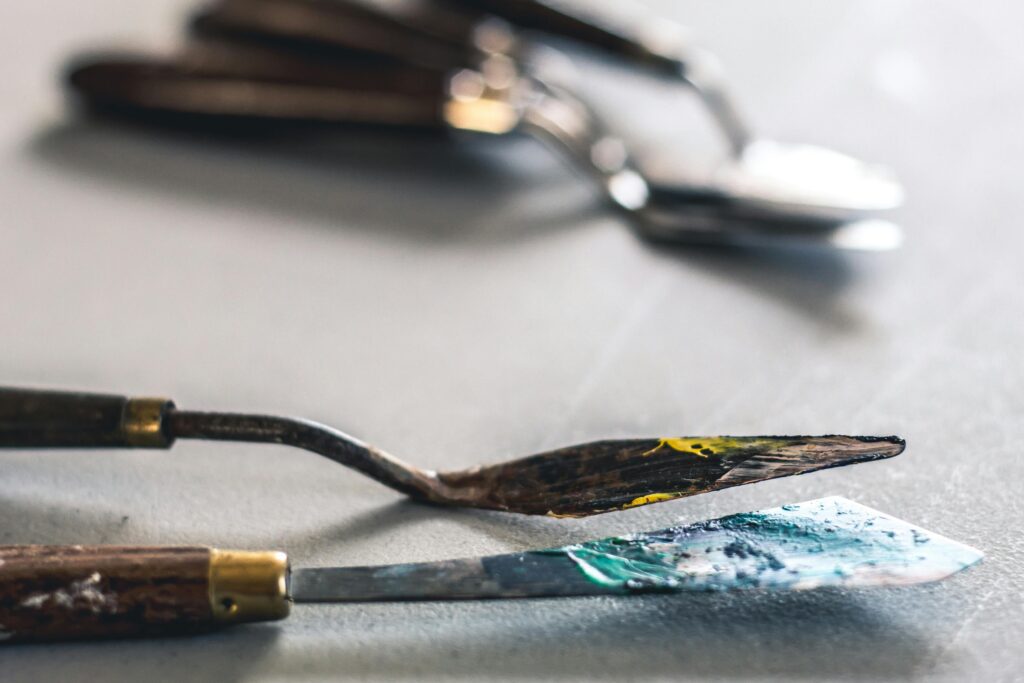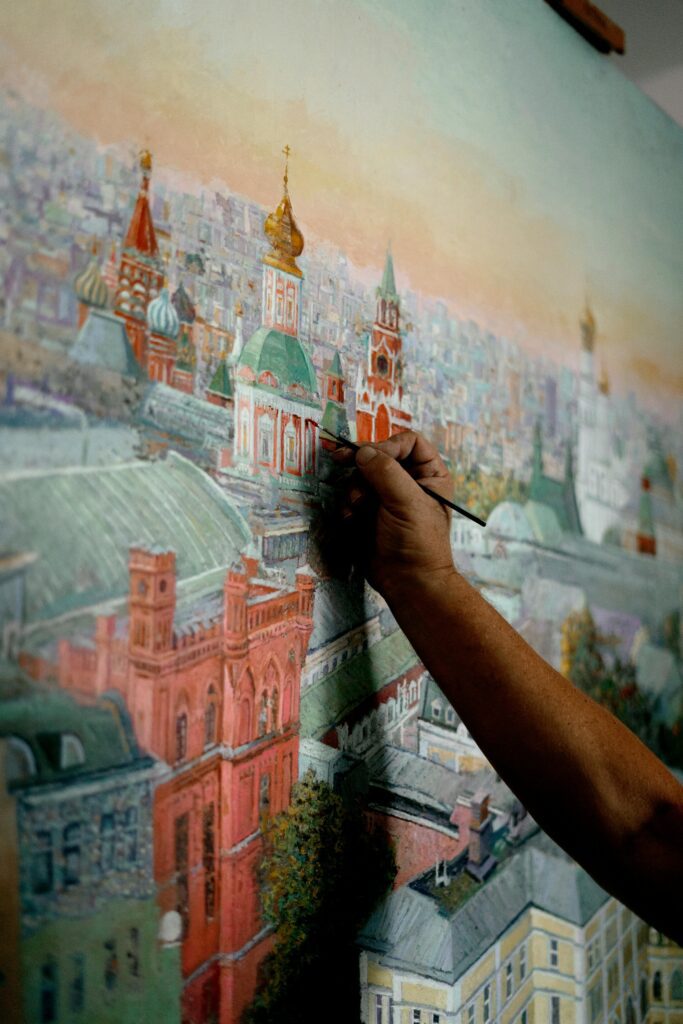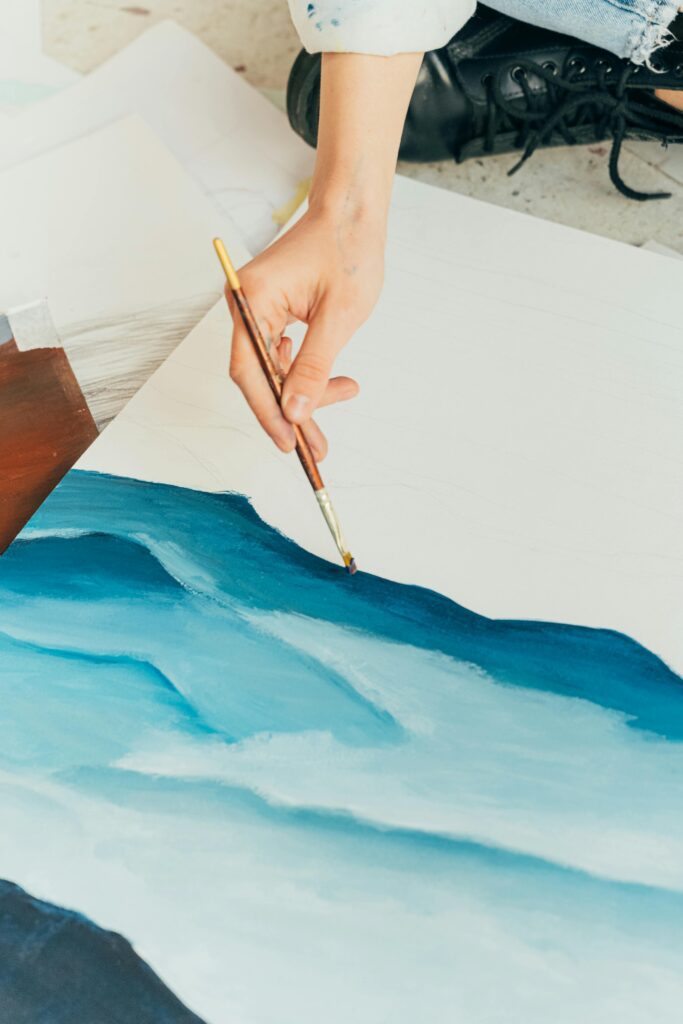5 Reasons Artists Struggle With Burnout And What to do About it

Burnout doesn’t always happen because you’re overloaded with work. More often, it builds quietly when you don’t have a system to hold your creative flow together. You jump from project to project, say yes to new ideas, and keep pushing through late nights because that’s what creative drive looks like, right? But over time, the energy that once felt limitless starts to fade. What used to be exciting now feels like another box to check. That’s when you realize it’s not the work that’s the problem, it’s the lack of structure behind it.
Creative systems aren’t about turning your process into a schedule or stripping away spontaneity. They’re about giving your creativity the kind of support it needs to last. It’s a bit like setting up scaffolding, the structure doesn’t replace the art, it just keeps it steady while you build. Systems help you protect your time, balance your workload, and create enough breathing room so ideas don’t suffocate under constant pressure. It’s less about control and more about sustainability.
Think of how much easier it feels to create when you know exactly where to start, how long to focus, and when to step away. That’s the power of having a system that works for you. It takes the guesswork out of your day and replaces it with clarity. You stop spending energy on logistics and can finally pour it into the work itself. Whether that means setting up themed workdays, batching tasks, or automating parts of your admin work, the goal is the same: to keep your creative energy available for what truly matters.
Once you find a rhythm that fits, everything else feels lighter. You start trusting your process more because you know it’s built to support you, not drain you. You learn when to push forward and when to pause without guilt. That kind of self-awareness doesn’t happen overnight, but small changes, like a defined creative routine or structured project flow, can make a huge difference. Over time, your work starts to feel grounded again, not like something you’re constantly chasing.
In this guide, we’ll look at how to design systems that help you create from a place of steadiness, not exhaustion. You’ll learn how to build boundaries that actually hold, find routines that make sense for your energy, and set up workflows that simplify your creative life. These systems aren’t about working harder or faster, they’re about working in a way that keeps you creative for the long haul.

Stop Waiting for “The Right Time” to Get Organized
Most creative people like to think they thrive in chaos. There’s a certain charm in saying, “I work best under pressure,” or “My mess is my process.” But after a while, that scattered rhythm starts to take more than it gives. You spend more time catching up than creating. Waiting for life to calm down before you get organized never works, because it never really does calm down. The right time rarely arrives on its own.
The best systems are born out of imperfection. They start when things are messy and deadlines are tight. You don’t need to pause your creative life to get organized; you build order right in the middle of the storm. Start small, one system, one folder, one routine that makes your days smoother. It doesn’t have to be fancy. Even a rough structure is better than none, and it evolves with you over time.
Pick one area that constantly drains you. Maybe it’s your file chaos, your scattered projects, or your endless notifications. Simplify that one thing first. You might be surprised how much lighter everything else feels once that single piece is under control. It’s not about being a neat freak; it’s about reclaiming the energy that disorganization quietly steals every day.
As you do this, pay attention to your natural flow. When do you feel sharpest? When does your focus fade? You’ll start noticing rhythms that you can build around. Maybe mornings are for deep work and afternoons for admin. Maybe weekends are when you review and reset. Systems grow stronger when they’re shaped around you, not around what’s “supposed” to work.
Over time, the clutter in your creative process starts to shrink. You’ll find yourself starting work more easily and finishing with less stress. The small structures you set up will quietly hold your energy in place, leaving more room for focus and flow. That’s when you realize, getting organized isn’t about perfection, it’s about peace of mind.
So stop waiting for the ideal setup or the mythical calm week. Just start where you are, with what you have. The sooner you take that small step, the sooner your creative world starts feeling lighter and clearer. Chaos might feel familiar, but clarity will take you further.
Learn to Work With Your Energy, Not Against It
Every creative person has rhythms. Some days ideas arrive in floods, and other days, your brain feels like static. The problem comes when you expect yourself to perform the same way every day, regardless of energy or focus. That mismatch between demand and capacity is what leads to burnout. The goal is not to control your energy, but to understand it.
Start by paying attention to your own cycles. Track your focus, motivation, and creativity for a week or two. Do you feel sharper in the morning, or do ideas start flowing later at night? Are you more productive after a walk, or after quiet time alone? Once you notice patterns, you can build a creative system that aligns with them instead of fighting them.
This kind of awareness changes everything. Instead of forcing productivity when you’re mentally drained, you learn to shift tasks, doing lighter work when your energy dips and saving high-focus projects for your peak hours. You stop treating your creativity like a machine that can be switched on anytime, and start treating it like the living, breathing process it is.
Working with your energy also means giving yourself permission to rest. You don’t lose time by pausing, you gain clarity. Rest is part of the work, not the opposite of it. When you learn to step back before you hit a wall, you bounce back faster and with stronger ideas. That’s the difference between surviving your work and sustaining it.
Once you start aligning your systems with your natural rhythm, your creativity feels steadier. You’ll notice fewer crashes, fewer late-night panic sessions, and a stronger sense of flow. Your days become less about “pushing through” and more about staying in sync with yourself. That steadiness is where long-term creative growth really starts.
The point isn’t to find a perfect formula. It’s to keep listening to what your energy is telling you, and adjust your systems accordingly. The more you respect those cues, the more resilient your creativity becomes, not fragile and dependent, but strong and self-sustaining.
Build Routines That Feel Flexible, Not Rigid
The word “routine” tends to make creatives uneasy. It sounds structured, predictable, and a little too ordinary for people who thrive on imagination. But in reality, the right kind of routine doesn’t limit you, it frees your mind to focus on what truly matters. Routines don’t box you in; they simply reduce decision fatigue so your creativity has more room to breathe.
Start with something simple, one anchor that gives your day a sense of flow. It could be starting your morning with five minutes of quiet, or ending your workday by listing what you completed. These rituals are not about discipline, they’re about direction. They remind your brain that there’s a beginning, middle, and end to each creative cycle.
Keep your routine light and adaptable. It’s okay if it shifts from week to week. The point is to have a gentle framework that supports your energy instead of controlling it. Maybe you prefer theme days, Mondays for brainstorming, Tuesdays for painting, Fridays for admin. Or maybe you like daily micro-routines, like setting up your workspace or stretching before sitting down.
A good routine doesn’t force consistency, it creates conditions for it. You’ll find that your brain starts recognizing these cues and slipping into focus more easily. Suddenly, starting work doesn’t feel like climbing a hill; it feels like entering a familiar rhythm. That rhythm becomes your anchor when motivation wavers.
Over time, your routine becomes part of your identity as a creator. It helps you stay grounded through distractions and uncertainty. When you have something to return to, even a loose, flexible rhythm, you never feel completely lost. You can adjust, rest, and restart without guilt.
The most sustainable creative routines are the ones that bend, not break. Let yours evolve with your seasons, your projects, and your capacity. Flexibility doesn’t weaken a routine, it’s what keeps it alive.

Make Boundaries Part of Your Creative Practice
Saying yes feels easier than saying no, especially when opportunities come your way. But every yes costs energy, time, and attention, resources that are already limited. Without boundaries, even exciting projects can turn into pressure points. Burnout doesn’t always come from doing things you dislike; sometimes it comes from doing too many things you enjoy, all at once.
Boundaries are not barriers, they’re filters. They help you decide what deserves your focus and what doesn’t. Start by defining your limits clearly. How many projects can you handle at once? What hours do you want to protect for deep work? When will you rest, no matter what? These are your creative guardrails, and they keep you steady when things get busy.
Communicating your boundaries is just as important as setting them. Be upfront with clients, collaborators, or even friends about when you’re available and when you’re not. It might feel awkward at first, but it saves both sides frustration later. Boundaries only work if they’re visible, to you and everyone else.
You’ll also need to set internal boundaries. Stop checking emails mid-creation. Learn to walk away when your focus starts fading. Protect your time like you protect your art. These small acts of self-respect accumulate, and soon your days start feeling less chaotic and more intentional.
Once you practice this enough, boundaries stop feeling restrictive. They start feeling like freedom, the kind that allows you to create without resentment or exhaustion. They give you the mental space to go deeper into your work, knowing you’ve built walls strong enough to hold your focus in place.
The more consistent you are with boundaries, the less burnout finds its way in. You stop running on autopilot and start creating from a place of choice. And that choice, more than anything, is what keeps your creativity healthy for the long haul.
Simplify Before You Scale
When your creative life feels scattered, the temptation is to add more tools, apps, or planners to fix it. But more often than not, the cure is subtraction, not addition. Complexity drains your energy faster than anything else. Every unnecessary step you add to your process makes it harder to stay consistent. Simplicity, on the other hand, brings clarity, and clarity is the foundation of longevity.
Look at your current systems and ask yourself what truly serves you. Do you really need three project trackers, or is one enough? Are you using multiple social media tools that overlap in purpose? Reducing your setup doesn’t make you less professional; it makes you more focused. Simplifying means cutting out noise so that your creative energy goes where it matters most.
Sometimes, simplicity also means saying no to certain habits. Checking messages first thing in the morning might feel harmless, but it scatters your focus before the day begins. Multitasking might make you feel productive, but it often leaves you drained. The fewer mental tabs you keep open, the easier it becomes to stay present with your work.
When you strip things down to the essentials, your process starts to breathe again. There’s more room for depth, reflection, and experimentation. You’ll find yourself finishing projects faster, not because you’re rushing, but because there’s less friction in your workflow. Simplicity isn’t the absence of ambition; it’s the structure that keeps ambition sustainable.
Once you feel confident in your streamlined process, you can start layering in new tools or systems, but only if they truly add value. Growth happens naturally when the foundation is clear. You’ll know what to expand and what to leave behind.
So before you try scaling your creative life, simplify it. Remove what’s unnecessary, refine what’s useful, and let the rest fall away. The lighter your systems feel, the easier it becomes to stay creative without burning out.
Automate What Doesn’t Need Your Creativity
Not everything in your creative practice deserves your full attention. Some tasks are necessary but not creative, invoicing, posting, scheduling, emailing, tracking deadlines. These repetitive tasks quietly drain your focus if you handle them manually every single time. Automation isn’t about becoming robotic; it’s about saving your energy for the work that actually lights you up.
Start by identifying your most repetitive responsibilities. Which tasks could run smoothly without you hovering over them? Maybe it’s auto-sending client reminders, scheduling content through a tool, or organizing files through smart folders. The point isn’t to over-tech your process, but to make small, thoughtful choices that free up your mental space.
Creative energy is finite. The less you spend on low-impact decisions, the more you can pour into your art. When you automate the boring stuff, you create space for spontaneity in your actual work. You’ll notice how much lighter your week feels when small things happen automatically in the background, without you having to think about them.
Of course, automation should still feel personal. If you’re scheduling social media posts, leave space for genuine interaction instead of fully stepping away. The goal is balance, a mix of structure and authenticity. Let systems handle the structure, and let you handle the human parts.
Once you start building small automations, you’ll realize how many hours you were losing to manual tasks. Suddenly, you have more breathing room for thinking, sketching, experimenting, and just being. You can finally return your focus to the work that actually moves your creative career forward.
Automation isn’t about removing effort, it’s about directing it wisely. Every system you set up is like hiring a quiet assistant who never complains or forgets. Once you trust it to handle the background noise, you can finally turn your full attention to creating something meaningful.

Learn to Pause Before You’re Forced To
Most creatives only rest when they crash. You push through fatigue because you’re afraid of losing momentum, telling yourself you’ll rest later, until later becomes too late. But intentional pauses are part of a healthy system. They’re not signs of weakness; they’re maintenance for your mind. If you don’t schedule your pauses, burnout will schedule them for you.
The most sustainable creators are the ones who rest before they need to. They see downtime not as wasted time, but as refueling. You can’t expect your creativity to stay sharp without recovery. Whether it’s taking a short walk, an afternoon off, or a week away from social media, breaks help you return with new perspective instead of resentment.
Learning to pause takes practice. It means learning to notice the early signs, when your concentration fades, when ideas feel repetitive, when you start dreading the work you used to enjoy. Those are signals, not failures. Listening to them early keeps your creativity from collapsing under exhaustion later.
Try scheduling mini-breaks throughout your day, even if it’s just ten minutes between projects. You’ll be surprised how much a short breather improves your focus. The goal is not to disconnect completely, but to reset your brain often enough that it doesn’t hit a wall. Small rests compound into long-term stamina.
You’ll find that once you normalize pausing, your guilt about taking breaks fades away. You start to see rest as part of your professional discipline, not a distraction from it. It becomes part of your creative system, built in rather than tacked on at the end of burnout.
A creative system that doesn’t include rest isn’t sustainable. Your energy is your most valuable tool, and protecting it requires as much strategy as producing your work. Pausing before you’re forced to is how you make sure you can keep creating for years, not just seasons.
Design a Workspace That Calms Your Brain
Your environment shapes your energy more than you realize. A cluttered or chaotic space subtly adds mental noise, even when you think you’ve tuned it out. On the other hand, a space that feels calm and intentional can instantly help you focus. The goal isn’t to make your workspace perfect, it’s to make it supportive.
Start by removing what distracts you. You don’t need a minimalist setup unless that inspires you, but everything in your space should serve a purpose. Keep the tools you use daily within reach, and store the rest away. Visual clutter is mental clutter. When your surroundings feel lighter, your thoughts follow suit.
Then add things that signal creativity to you, a color palette you love, textures that inspire you, or objects that remind you why you create. Your space should make you want to start working. Even small details, like the right lighting or a favorite playlist, can help your brain associate the environment with focus and calm.
If you work from multiple places, studio, home, café, create small rituals that make each space feel familiar. Maybe it’s always having your sketchbook beside your tea, or starting your session by clearing your desk. These repetitive cues help your mind switch into creative mode more easily.
Remember that your workspace isn’t just physical. It’s also digital. Clean your desktop, organize your files, and remove the distractions from your phone when you’re working. The smoother your digital environment feels, the less friction there is between your ideas and your output.
A calm workspace doesn’t look one way, it feels one way. It’s a space that helps you breathe, focus, and return to your work with ease. The right environment won’t do the work for you, but it will make doing the work feel more natural.

Keep Your Goals Simple and Visible
Burnout often creeps in when your goals get too complicated. You start chasing ten things at once, hoping they’ll all align somehow, and end up feeling scattered. The best systems keep your priorities simple and visible. When you know exactly what you’re working toward, decision-making becomes faster and less stressful.
Start by narrowing your focus to three clear goals at a time, one long-term, one medium, one short. Write them down somewhere you’ll see them daily. Your brain needs constant reminders of what truly matters. Without that, it’s easy to get pulled into busywork that looks productive but doesn’t move you forward.
These goals don’t need to be huge. They just need to be clear. “Finish my new series by March” or “Pitch to three galleries this quarter” is specific and actionable. Big goals can feel inspiring, but they’re only useful when broken down into steps you can actually take this week.
Once you have your goals, build small checkpoints into your system. Review them weekly and adjust as needed. The idea isn’t to chase them obsessively but to stay aligned. You’re giving yourself direction, not pressure. A simple goal that stays visible will always serve you better than an elaborate one you forget about.
Over time, keeping your goals visible becomes a quiet form of accountability. You start making better decisions because the next step is always clear. You stop chasing every shiny opportunity and start saying yes to what fits your bigger vision.
A grounded creative system is one that knows where it’s heading. When your goals are simple, you can focus deeply. When they’re visible, you stay consistent. That combination alone can reduce burnout more than any productivity hack ever will.
Revisit and Refine Your Systems Regularly
Creative systems aren’t meant to stay fixed. What worked six months ago might not work now, and that’s normal. As your projects, energy, and priorities shift, your systems should evolve with them. The danger lies in treating your routines like permanent solutions. Regular reflection keeps your systems alive and aligned.
Set aside time every few months to review your setup. Ask yourself what’s flowing easily and what constantly feels like a struggle. Sometimes you’ll realize a system needs tweaking, not replacing. Other times, you’ll see you’ve outgrown it completely. Both outcomes are good, they show you’re paying attention.
Reflection doesn’t have to be complicated. You can jot down what’s working in your journal or spend ten minutes reviewing your calendar. The key is to stay honest. Don’t cling to a method just because it once helped you. Systems that stop serving you quietly start to drain you instead.
You can also make this review process something you look forward to. Light a candle, make a coffee, and treat it like a creative reset. It’s a moment to realign your workflow with your current goals and lifestyle. Small adjustments now prevent bigger burnout later.
The best creators aren’t the ones who find the perfect system; they’re the ones who keep refining theirs. They stay flexible, curious, and willing to evolve. That adaptability is what keeps their creativity fresh and sustainable.
Your creative system should always feel like it’s working with you, not against you. Revisit it often, let it grow alongside you, and keep removing what no longer fits. That’s how you protect both your art and your energy for the long term.
